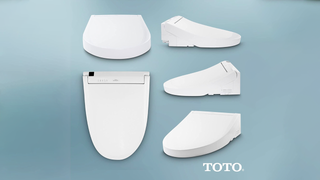There's Actually a Difference Between 'Snowfall' and 'Snow Depth'
Snow days almost bring as much joy to a child as Christmas morning. And as kids and parents anxiously watch the news to see if the weather might cause a school day cancelation, there are two measurements you might...


Photo: rSnapshotPhotos (Shutterstock)
Snow days almost bring as much joy to a child as Christmas morning. And as kids and parents anxiously watch the news to see if the weather might cause a school day cancelation, there are two measurements you might hear that sound the same: snowfall and snow depth. But you might have different numbers for each. Let’s look at what makes these two measurements different, how to measure the difference between the two (if you want to venture out into the cold, that is), and what it takes to trigger a snow day.
What is snowfall?
According to Merriam-Webster, snowfall is defined as “the amount of snow that falls in a single storm or in a certain period.”
Suppose you want to calculate how much snow fell during a single night. Because the grass and air at the bottom of the ground can interfere with your measurement, the National Weather Service (NWS) recommends using a snowboard (or any 16x16-inch piece of plywood) because it provides a hard, flat wooden surface. You just need to find a spot that’s easy for you to walk to and gives you a 45-degree angle of the sky all around you. Then place something tall you can see, like a flag, on top of your snowboard so you can see it after the snow falls.
When you wake up the next day, take a ruler to measure the amount of snow on the snowboard. If the height of the snow varies, take at least three measurements to get the average measurement. You can even report your calculations to the NWS through Facebook or Twitter, as they regularly monitor their social media accounts.
G/O Media may get a commission

44% off
Toto Washlet Electronic Bidet Toilet Seat
They've thought of everything.
This bestselling bidet has ... pretty much everything you want from a toilet seat. It’s got a heated seat, a deodorizer. A remote control (yeah!), and a design that allows for no splash-back when in use.
So what’s snow depth?
As you probably figured out by its name, snow depth is the total amount of snow currently on the ground. Most of the time, the amount of snowfall and snow depth are likely to be the same during a storm.
However, there are times when these measurements can vary. According to the NWS’s guidelines for snow measurement, if snow changes to rain or sleet, those interested in an accurate snowfall measurement need to do so before the weather changes. Rain can condense or melt the snow already on the ground, making the snow depth measurement different from how much snow actually fell.
For example, if the snowfall amount was four inches before turning into rain, it would alter the amount of snow on the ground, making the snow depth three inches when the rain ends.
Which measurement means my kids are getting a snow day?
According to this article in The Atlantic from 2014, knowing what amount of snowfall or snow depth will trigger a school closing is tricky and hard to predict.
In the midwest, there are other factors to consider, such as temperature and wind chill. Large cities like Chicago and New York have better resources to salt and clear the roads than a typical suburb. And obviously, in southern states, the mere hint of snowfall can trigger a snow day.
At the end of the day, it’s not the amount of snowfall or snow depth that will cancel school: It’s how prepared your community is to weather the storm.

 JimMin
JimMin 
































